This quinoa rice mix is a great way to get the enjoyment of eating steamed white rice with your stir-fries and other dishes—but with the high-protein and fiber rich addition of quinoa!
We do a 50/50 mix here. However, you can up the amount of quinoa for more fiber, protein, and nutrients, or ease into things with a greater proportion of jasmine rice. If you’re trying to cut down on your consumption of refined starches, but aren’t ready to transition wholeheartedly to brown or black rice, this recipe is for you!
Quinoa Rice: a High Protein Alternative
A few months ago, we got an email from a reader who was very sadly requesting to be removed from our email subscriber list (which almost 200,000 of you are currently part of, by the way…crazy!).
They didn’t actually want to stop receiving recipes, but they were starting to feel that they couldn’t go on any longer. The alleged culprit? White rice. They said that all the recipes were so tasty that their white rice consumption had gone up considerably, and the accompanying weight gain had to be nipped in the bud!
Alas, such is a problem that we have quietly grappled with our whole lives, and the reason for our recipe today…
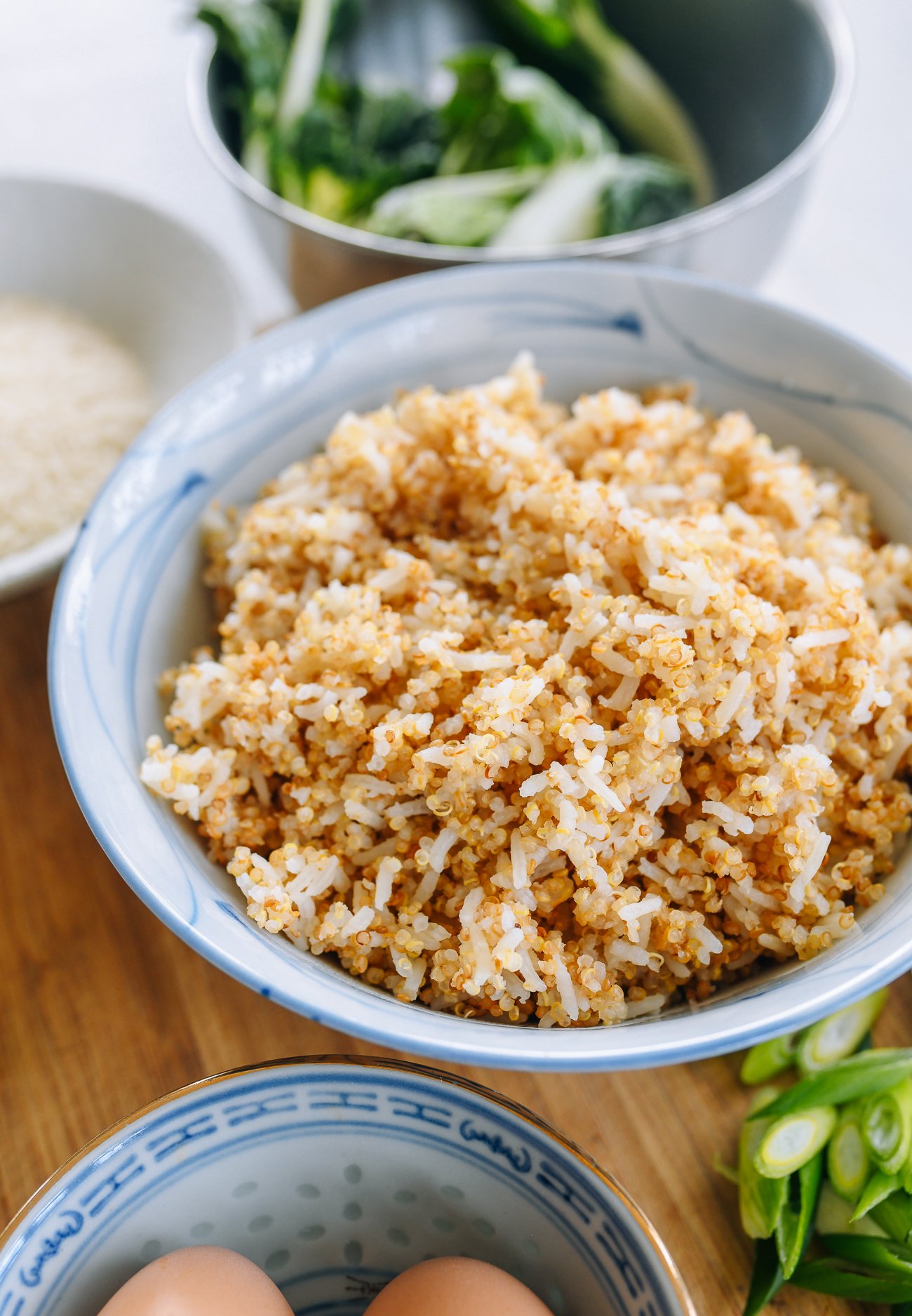
To White Rice Or Not to White Rice?
Most health-conscious Chinese families know the sense of disappointment coupled with grudging acceptance upon opening the rice cooker to find that the person in charge of the kitchen that day made brown rice instead of the fluffier, more enjoyable blank canvas that is white rice.
(In our house, the said culprit—albeit well-meaning—is almost always my mom. If you actually like brown rice, read our recipe here for three ways to cook itand our fried brown rice recipe!)
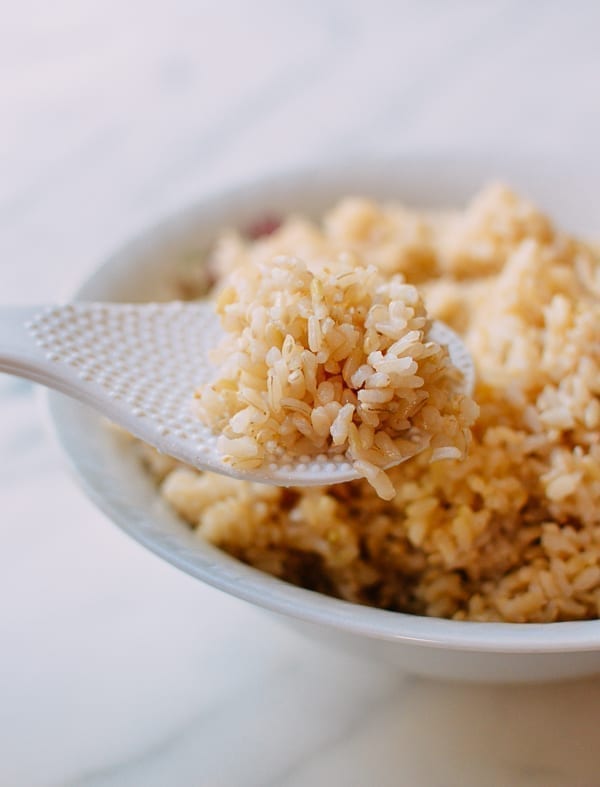
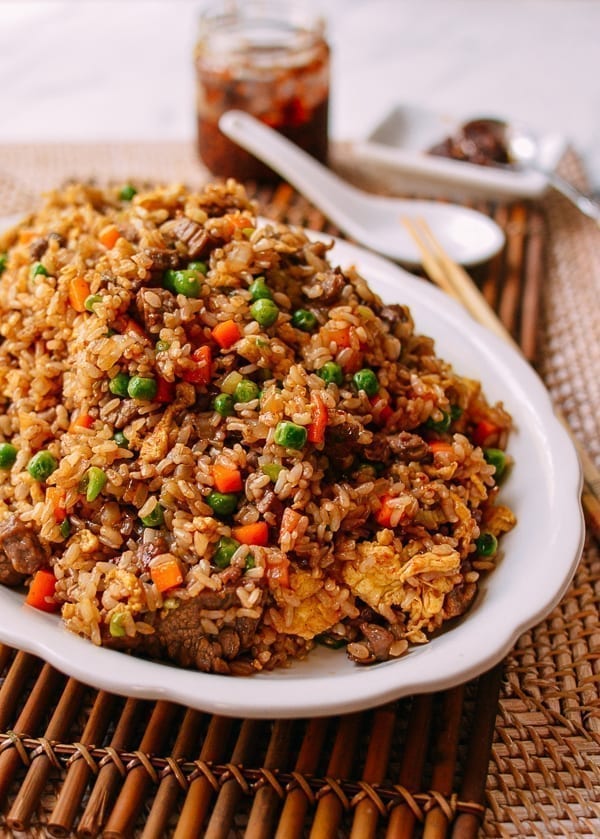
But as folks who would happily eat white rice multiple times a day, one does start to wonder about…the dreaded so-called “healthier” alternatives.
White rice spikes your blood sugar more than brown rice, and contains less fiber and fewer nutrients. Brown rice on the other hand, retains the bran and germ of the rice kernel, making it a better source of fiber and vitamins, and a lower glycemic option.
White rice isn’t totally without virtue, as it’s easy to digest and is readily metabolized, making it a quick source of energy.
Supposedly, leftover white rice (that has been chilled in the fridge and then reheated) can also contain “resistant starch,” which means it doesn’t spike blood sugar levels quite as much.
Most of all, though, it’s all about texture. It’s the perfect role it plays as a base for basically ANYTHING, as countless cuisines around the world can attest to.
In spite of white rice’s virtues, it does seem, generally speaking, that the average dietician’s recommendation is straightforward and irritatingly unyielding: if you’re looking for a “healthy” swap, go for brown rice or black rice instead of white rice. (Or “better yet”, soulless cauliflower rice? Bah.)
With the “healthy lifestyle” boogeyman bearing down on us, it can feel like every helping of white rice is a bad decision! Hence, recipes like my mom’s multigrain congee as an alternative to pao fan or regular congeewhich is actually delicious and very enjoyable.
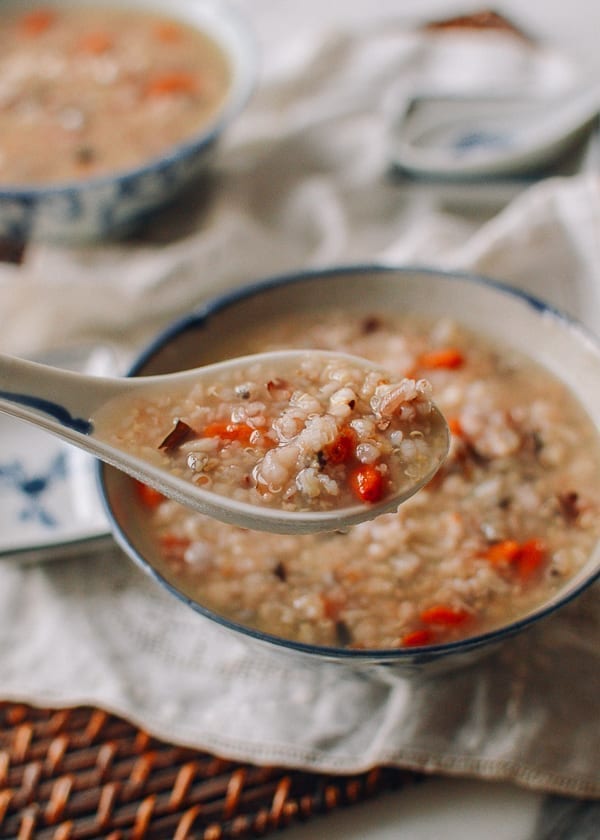
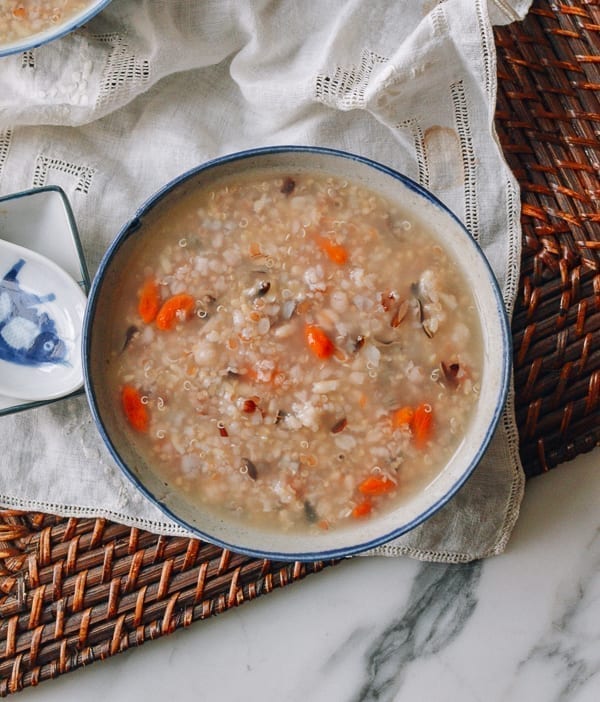
But what of that dreaded brown rice…?
I admit it. I hate brown rice.
The facts must be laid out for what they are. I *hate* brown rice. Sarah agrees with me.
As I get older, I’m fully embracing the practice of calling out foods that I simply don’t enjoy so much. I just don’t feel the need to grit my way through those things now that I’m somehow a functioning adult. (Also, lookin’ at you, asparagus…)
So, even if you do manage to cook brown rice properly (see our guide to cooking brown rice with not one but two handy methods), I personally don’t find it as satisfying.
The rice doesn’t absorb sauce—it just sits on those sad brown husks. What’s more, the husk makes chewing so tiresome that my TMJ acts up, and my jaw gets stiff mid-meal! (Tell me you’re over the hill without telling me you’re over the hill…)
Also—it just doesn’t taste that good. Flavor, mouthfeel, call it what you want, it just ain’t my favorite.
Enter: Quinoa Rice
By now, quinoa has become mainstream. It originates from South America, where it is a staple in the Andes mountain region that cuts through Venezuela, Colombia, Ecuador, Peru, Bolivia, Chile, and Argentina. It has been hailed as a superfood, but my reasons for eating it are much more simplistic.
- It’s high protein, representing a complete protein source (unlike brown rice).
- In my opinion, it’s a much more pleasing and unobtrusive substitute for white rice.
Now, I’m not going to get all crazy here and tell you to replace white rice with quinoa outright. Because I’ve done that, and by the time you get two thirds of the way through your meal, it’s all a bit sad. The Chinese flavors of stir fries and braises just aren’t complemented by quinoa nearly as well as they are with jasmine rice.
But mixing the two? Now that’s magic. You get the best of both worlds. The cohesion and comforting base of white rice, and the wholesome heartiness of quinoa, all without looking over your shoulder waiting for the “healthy lifestyle” boogeyman to attack.
All in all, this recipe makes for a combo you can feel good about and is a true representation of how I manage a “healthy diet” as someone who cooks and eats for a living. I don’t want to suck all the enjoyment out of my food, but I do want to make decisions that will make my body happier, giving it the fiber and protein it so appreciates.
If you’re still on good terms with white rice, feel free to totally ignore me. If you’re eating it basically every night and wondering if you should be supplementing it with something a bit more wholesome, learn how to make my quinoa rice mix below!
Quinoa to Rice Ratios
If you’re easing into this whole quinoa rice substitution thing, you may want to start with a 3:1 white rice to quinoa ratio (i.e., 1½ cups white rice and ½ cup quinoa). This applies especially if you’re not sold on quinoa to begin with—or have people in your family who aren’t. You may find that this makes the transition a little easier. This recipe is for a 1:1 ratio. I’ve also had success with a 1:3 ratio on white rice to quinoa!
Quinoa Rice Recipe Instructions
Toast the quinoa in a dry pan over medium-high heat for 5-8 minutes, or until it is a couple of shades darker and you start to hear a light crackling/popping sound.
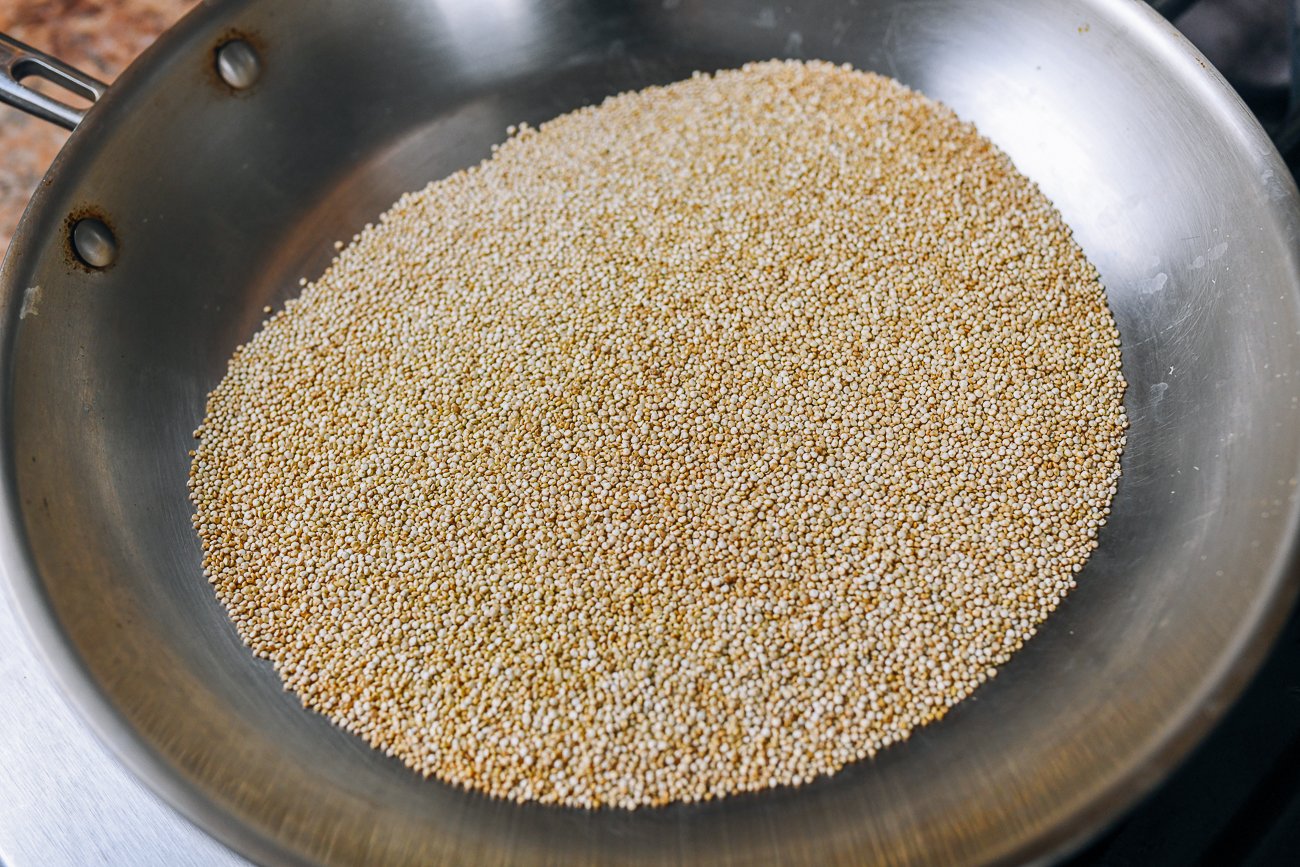
If using a rice cooker, transfer the quinoa and rice to your rice cooker pot. Add 2 cups water (i.e. an equal volume of water to quinoa and rice. You can also just use the fill lines in the rice cooker, and the cup it came with). Start the rice cooker, and walk away until it’s done!
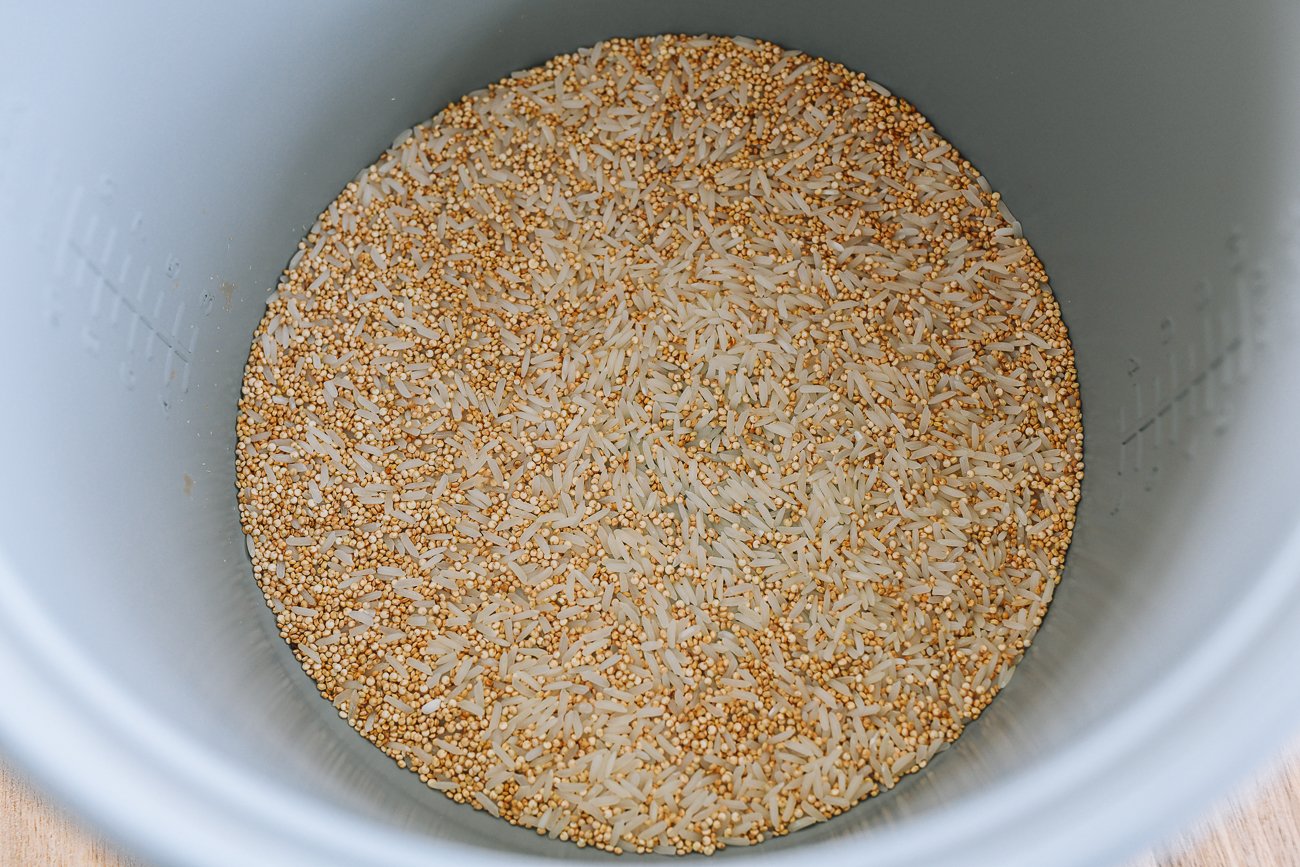
If cooking on the stovetop, add the rice and quinoa to a medium pot with a tight-fitting lid. Add 2 cups of water, bring to a boil, and immediately cover the pot. Reduce the heat to the lowest setting, and cook for 15-20 minutes. Take a peek at the 15-minute mark to make sure it’s not burning.
When the grains are fluffy and cooked through, fluff with a rice paddle and serve!
To rinse or not to rinse?
At this point you’re probably wondering—Why no rinsing step?
So I know that decades on decades of Asian cooks shouting from the rooftops has now paid off and most folks know to rinse their rice at least 1 or 2 times or conventionally “until the water runs clear”. In light of our changing planet, however, I’ve become plagued by existential guilt every time I take what feels like a very indulgent step of washing my already very high quality rice in water.
So—in this recipe, I’ve skipped the rinsing step. I know. Shocking. That said, if I do see some stray particles that are neither quinoa seed nor rice grain, I will pour the water off and go for another round of H2O. In most cases, though, I’ve gotten good results forgoing this step.
That said, check out this Eater article on the virtues of saving your rice water and what you can do with it.
If you’re not confident in the quality of your quinoa you can rinse it in advance and then let it air dry on a sheet pan before toasting. We get ours from Costco and sometimes buy organic brands and haven’t had issues with stray particles. (Knock on wood.)
Others are wondering about a naturally occurring substance called saponins that to some can taste quite bitter. Previous wisdom stated that the saponins can be rinsed off with a turn through cool water. These days, most commercially sold quinoa is pre-rinsed so no need to worry about that.
It’s a personal decision, but hopefully that helps you decide what you’re comfortable with!
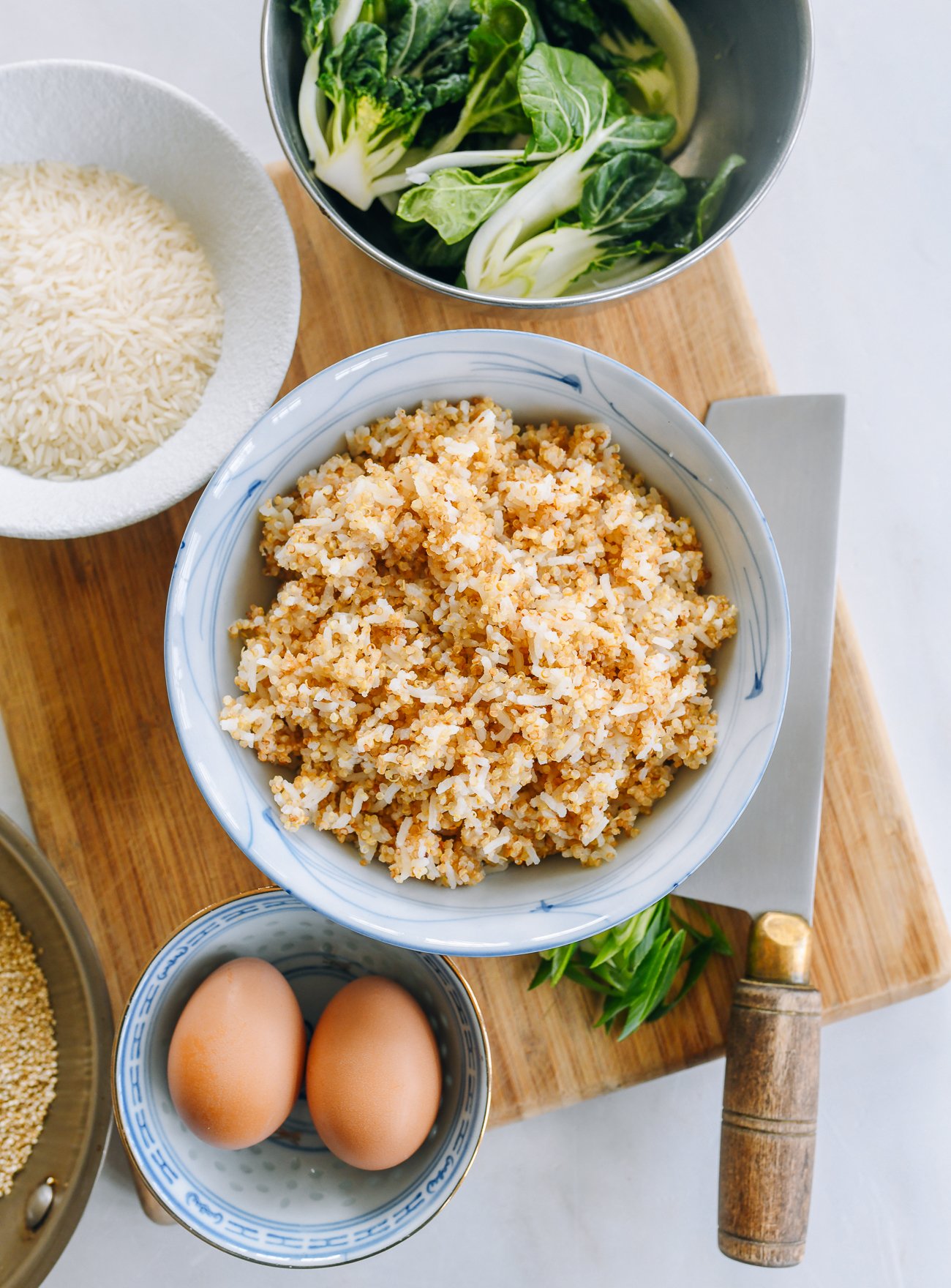
Quinoa Rice
High-protein and fiber rich quinoa rice is a great way to enjoy steamed white rice with your favorite Chinese dishes—supplemented with healthy quinoa. It’s the best of both worlds!
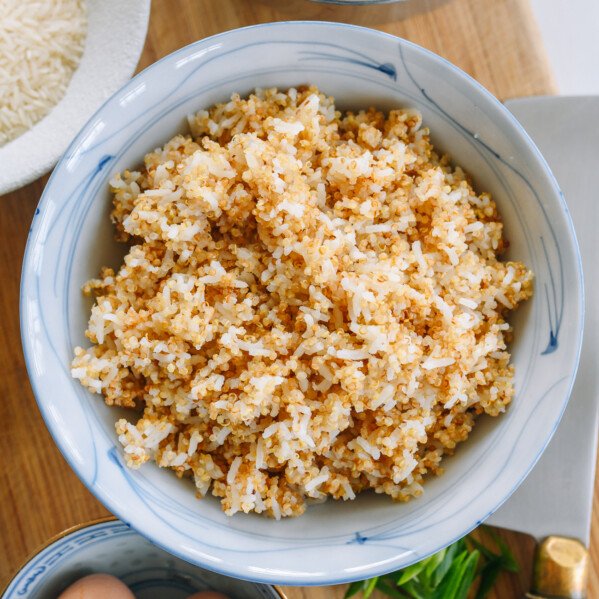
serves: 4
Prep: 5 minutes
Cook: 20 minutes
Total: 25 minutes
Instructions
-
Toast the quinoa in a dry pan over medium-high heat for 5-8 minutes, or until it is a couple of shades darker and you start to hear a light crackling/popping sound.
-
If using a rice cooker, transfer the quinoa and rice to your rice cooker pot. Add 2 cups water (i.e. an equal volume of water to quinoa and rice. You can also just use the fill lines in the rice cooker, and the cup it came with). Start the rice cooker, and walk away until it’s done!
-
If cooking on the stovetop, add the rice and quinoa to a medium pot with a tight-fitting lid. Add 2 1/2 cups of water (some extra water will help avoid accidental burning), bring to a boil, and immediately cover the pot. Reduce the heat to the lowest setting, and cook for 15-20 minutes. Take a peek at the 15-minute mark to make sure the bottom of the pan isn’t getting scorched.
-
When the grains are fluffy and cooked through, fluff with a rice paddle and serve!
Tips & Notes:
nutrition facts
Calories: 325kcal (16%) Carbohydrates: 64g (21%) Protein: 9g (18%) Fat: 3g (5%) Saturated Fat: 0.4g (2%) Polyunsaturated Fat: 1g Monounsaturated Fat: 1g Sodium: 10mg Potassium: 292mg (8%) Fiber: 4g (16%) Sugar: 0.1g Vitamin A: 6IU Calcium: 36mg (4%) Iron: 2mg (11%)

